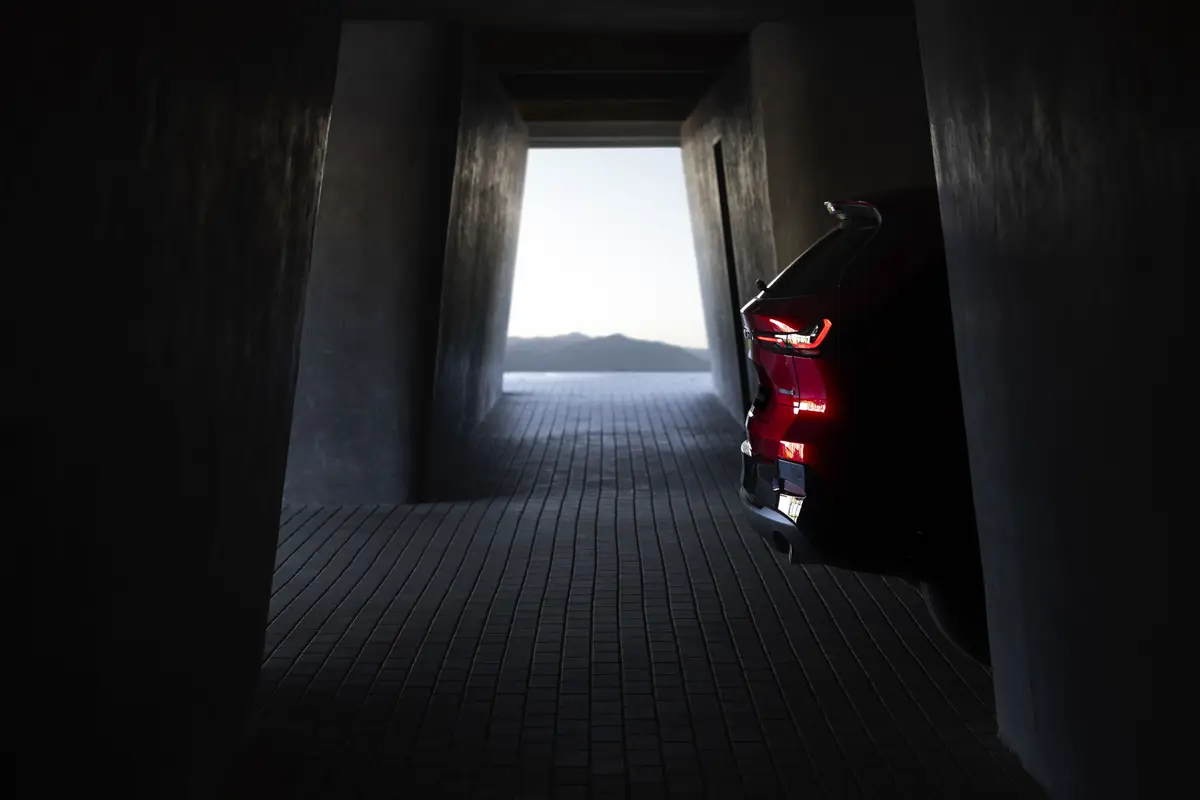2024 GMC Hummer EV SUV Review: (4) Tons of Fun!


The verdict: It feels irresponsible to love something this big, inefficient, expensive and vulgar, but we can’t help falling for the GMC Hummer EV SUV’s ability to entertain.
Versus the competition: For the same money, a Rivian R1S is far nicer inside, more space-efficient and easier to maneuver, but it’s not as much fun to drive — and it’s certainly not as much of a crazy spectacle.
GM’s reinvention of the Hummer — from a gas-guzzling, military-inspired, road-hogging SUV into the flagship electric vehicle of its Ultium EV program — has been fascinating to watch. Now a distinct model line under the GMC truck brand, the Hummer EV Pickup and SUV were slow to get out of the gate due to some production snags. Now, they’re arriving en masse at dealerships and appearing on public roads with increasing frequency. Our exposure to the pickup truck and now the SUV has been eye-opening for us all: We’re almost ashamed to say that despite the undeniable lunacy of this new EV, everyone on the editorial staff who’s driven it has fallen in love with it.
We feel dirty. It feels irresponsible. We shouldn’t enjoy this thing as much as we do — and believe me, we do indeed enjoy driving and using it. Because despite the 4 tons of craziness on display for you here, the Hummer EV SUV is a triumph in terms of attention-grabbing marketing bravado backed up by genuine surprise-and-delight capability in an astonishingly well-done vehicle.
Related: 2024 GMC Hummer EV SUV on the Drag Strip: WTF Was That?
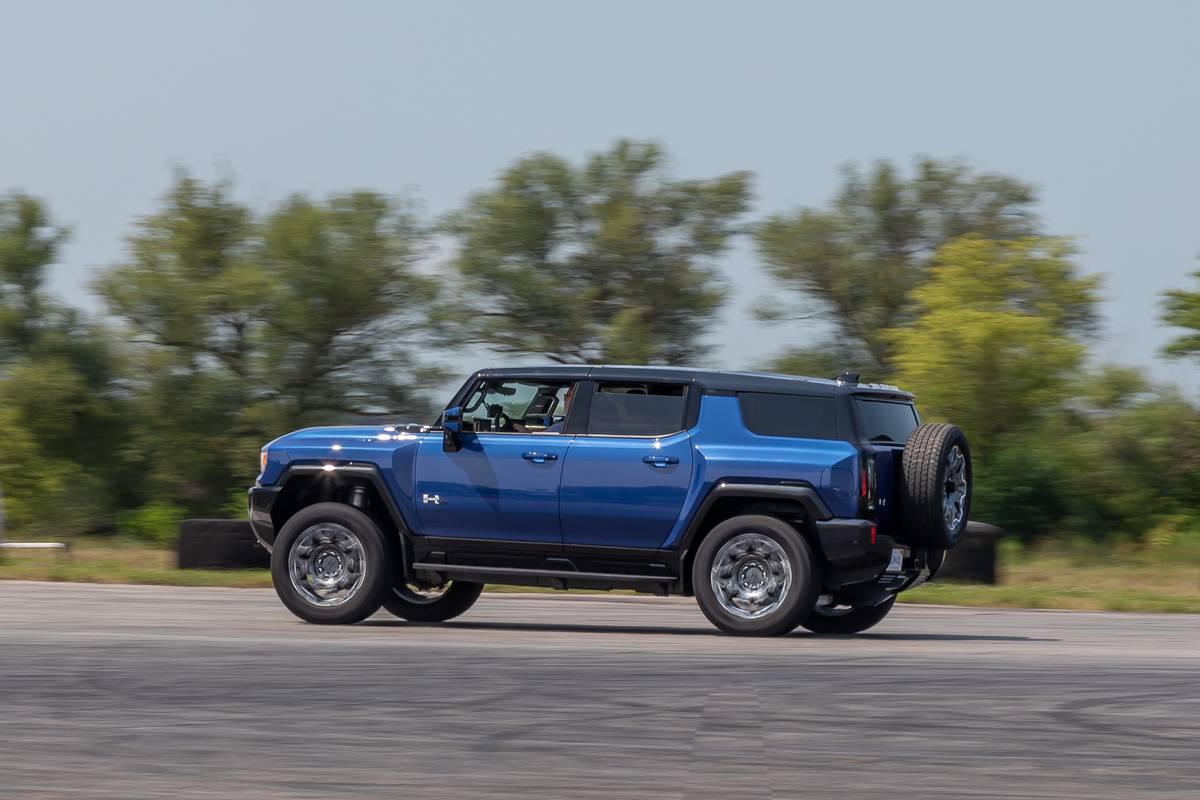
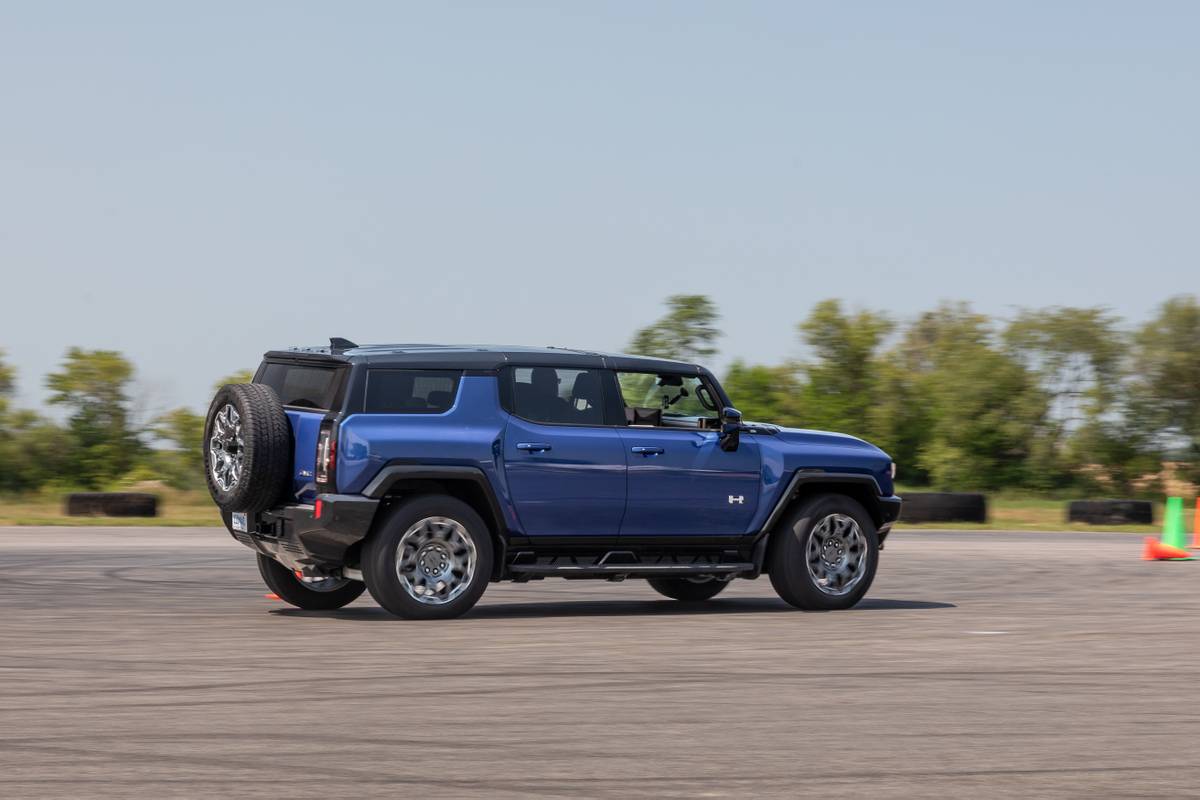



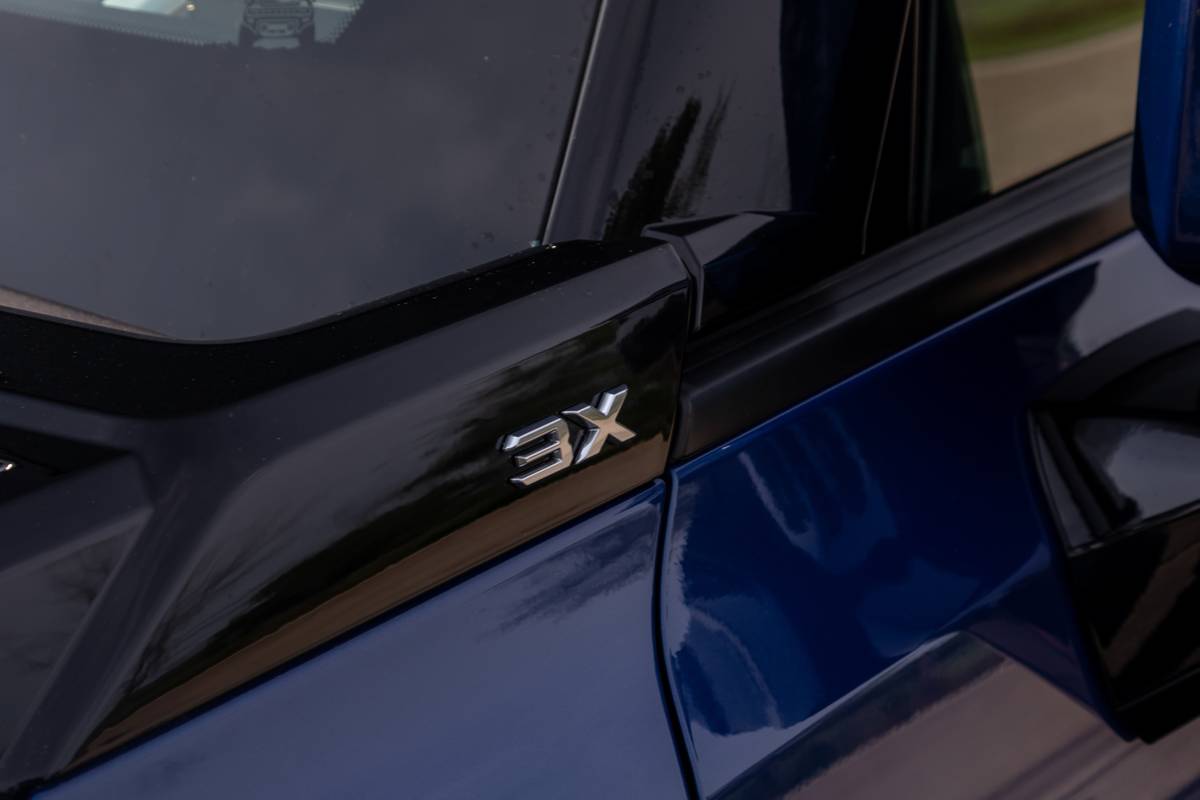
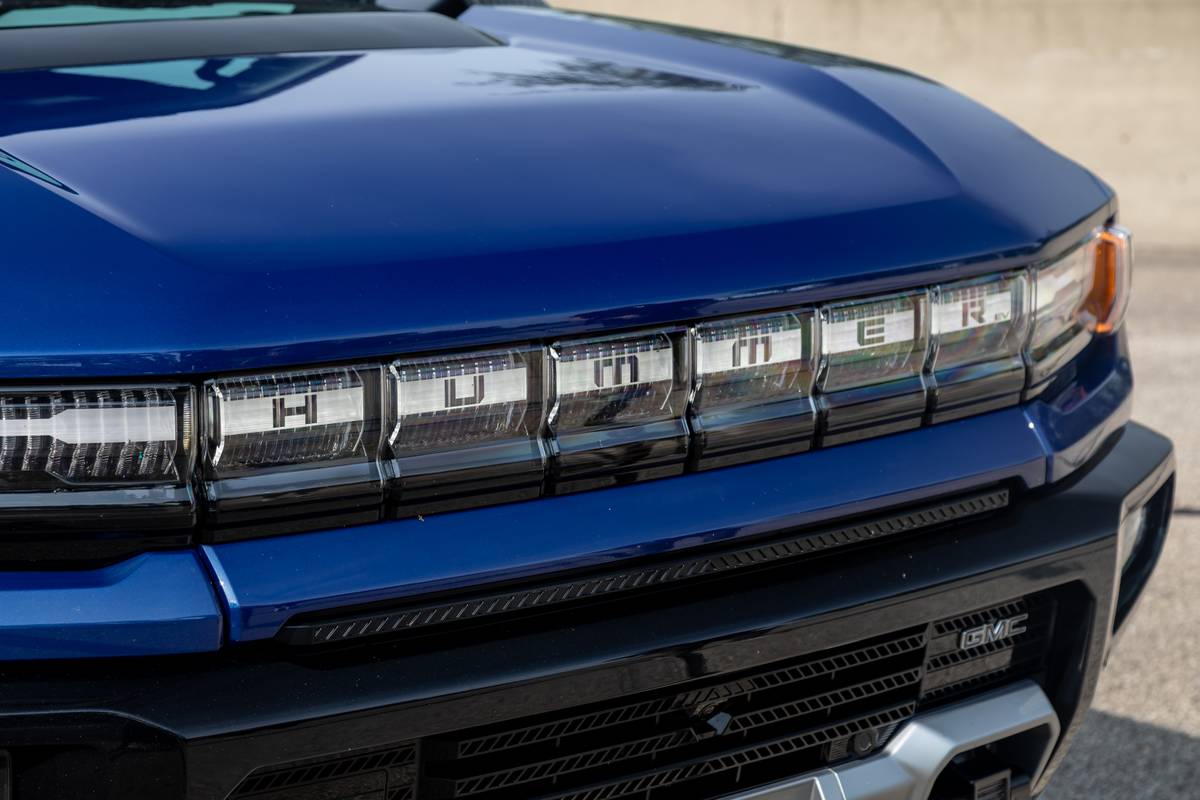







A Brilliant Styling Update
One look at this Hummer EV SUV and you know exactly what it is even if you aren’t old enough to have been aware of the Hummer brand’s popularity 20 years ago. This SUV’s distinctive look is key to its audacity. Sitting on a super-wide body, you get balloon-like off-road tires if you opt for the Extreme Off-Road Package or blingy-but-gorgeous 22-inch multispoke wheels wrapped in all-terrain SUV tires if you don’t.
The Hummer EV SUV’s proportions work better than those of the pickup thanks to a shorter wheelbase that tidies things up a bit. All of the traditional Hummer styling cues are still there, like a windshield so impossibly short it necessitates three wipers, a multibar grille that’s now a signature lighting element, and beefy flanks with a slim, tanklike greenhouse. It’s visibly a Hummer, and its styling makes it look as if there wasn’t a 12-year gap between the demise of the Hummer brand after GM’s 2009 bankruptcy and its rebirth as an EV in 2022. It simply looks proper; it’s clear this is not a poser. With visible off-road-ready styling cues, like high front bumper cutouts for putting tires on boulders, you know from looking at it that it’s ready to tackle the trails … even if its owner is unlikely to ever take it into the rough.
Equipped Like No Hummer Before It
The Hummer EV SUV is powered a little differently from the longer pickup. Its shorter wheelbase means it has a smaller battery, with fewer of the modules that comprise the pack. This SUV, then, has a 170-kilowatt-hour battery instead of the pickup’s 200-kWh-plus pack. Two- and three-motor drivetrains are available; our 3X test vehicle was equipped with three (one motor for the front wheels, two for the rears). This powertrain is good for 830 horsepower and an unknown amount of torque because GMC insists on reporting these Hummers’ torque numbers using a calculation nobody else in the auto industry uses; it’s a marketing gimmick we won’t bother to repeat here because it’s meaningless from a comparison standpoint. The two-motor variant produces 570 hp, but both the 2X and 3X SUVs have similar driving ranges: up to 303 miles for the 2X and up to 314 miles for the 3X.
The 3X pickup actually makes 1,000 hp, while the 2X pickup still makes 570 hp, but the SUV can otherwise be equipped just like the pickup. That includes the Hummer’s four-wheel-steering feature — which, frankly, is a must-have for a truck this big. Yes, it can do the CrabWalk gimmick, but I’ve yet to discover a proper use for the ability to slide diagonally left or right, other than TikTok silliness. More useful is the ability to maneuver this big Hummer EV into urban parking spaces with ease or turn corners in tight situations. Four-wheel steering makes this big, 4-ton Hummer feel like a much smaller and more nimble SUV. Also helping in this regard is an adaptive air suspension, which lets you adjust the vehicle’s ride height to different levels depending on terrain and situation.
If you’re heading off-road, there are several modes to help you do that, but for this test, we were more interested in the Hummer EV SUV’s on-road abilities, including quarter-mile drag-strip times, ability to autocross and highway efficiency. Also, our test vehicle had the big 22-inch premium wheels (which look fantastic), not the Extreme Off-Road Package’s 18-inch off-road wheels and tires, so our Hummer really wasn’t meant for dirt duty anyway.
Related Video:
Feels Smaller Than It Is
Out on the street, the Hummer EV SUV is just brilliant. Yes, it’s heavy — more than 8,700 pounds according to the sticker on the door jamb, which is as much as a full-size, heavy-duty diesel pickup. But only when braking does it actually feel that heavy; with an absolutely stunning ability to quickly accelerate, responsive steering and a tight turning circle, the Hummer EV SUV behaves like a much smaller SUV in nearly every way. It’s not unwieldy, and it’s not overly cumbersome. Rather, it’s surprisingly nimble, quick to react and won’t make its driver nervous about its bulk until they’re trying to squeak past someone in a tight lane.
We took the Hummer EV SUV to a drag strip to test its acceleration given GMC advertises it can go from 0-60 mph in 3.5 seconds. The best we recorded was 3.76 seconds to 60 mph — a difference that will be indistinguishable when measured by the seat of the pants by most people out in the real world. (Read more about the Hummer’s drag-strip adventure). We saw this time when engaging something called “Watts to Freedom” mode (WTF, get it?), which prepares the Hummer EV SUV for repeated all-out acceleration runs. It lowers the truck to the lowest possible suspension setting, conditions the battery for rapid discharge to power the electric motors, tightens up the SUV’s responses and engages a launch mode. We also found that WTF mode useful in a tight autocross handling course we had set up; turns out the Hummer EV SUV is spectacular fun when tossed around cones like a Mazda Miata. It certainly doesn’t handle like a Miata, but it’s great fun to chuck a monster truck through a tight cone course in a big, empty parking lot. The Hummer EV SUV responds thanks to its four-wheel steering, lowered suspension and prodigious power.
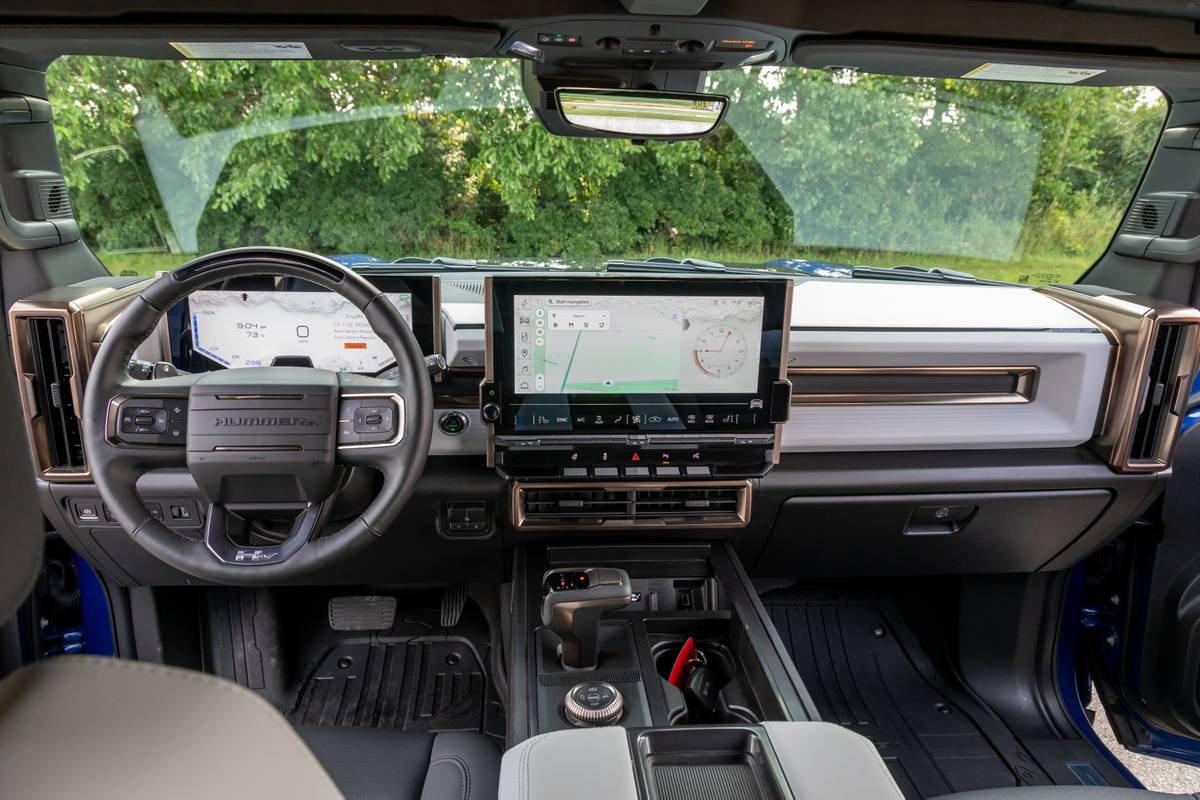
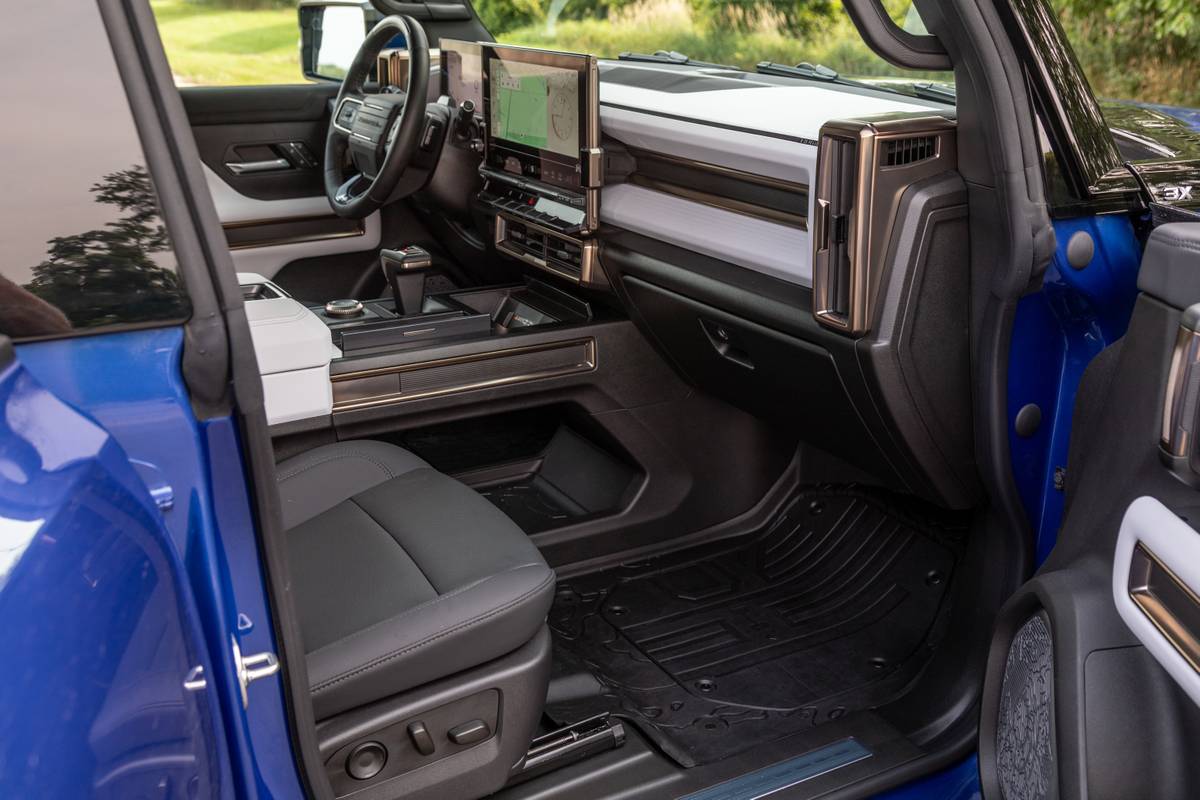
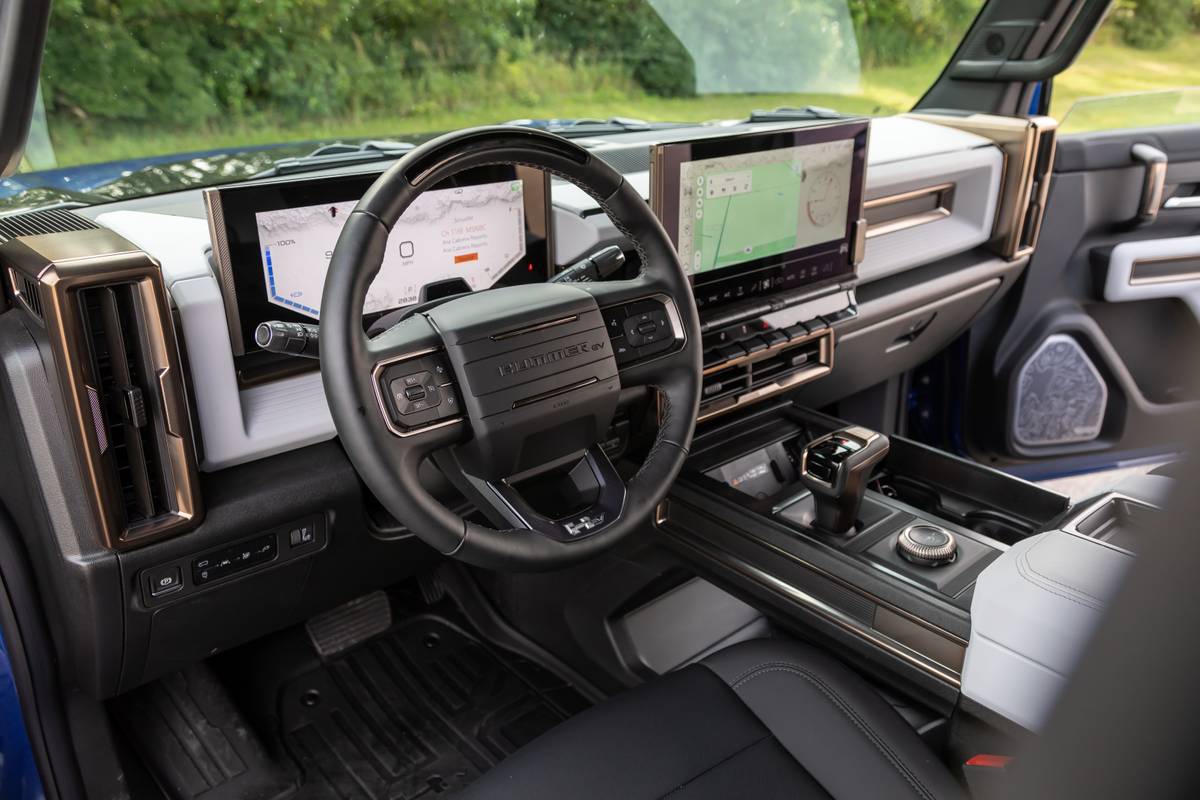
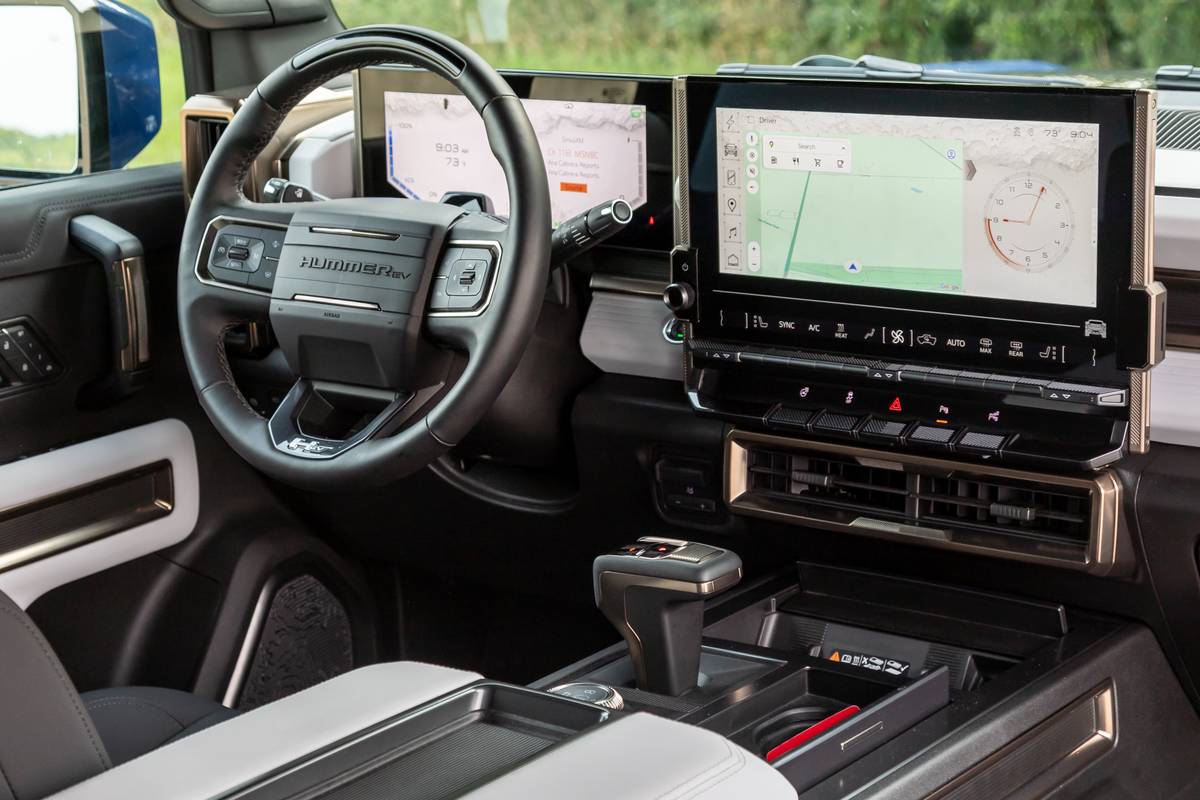
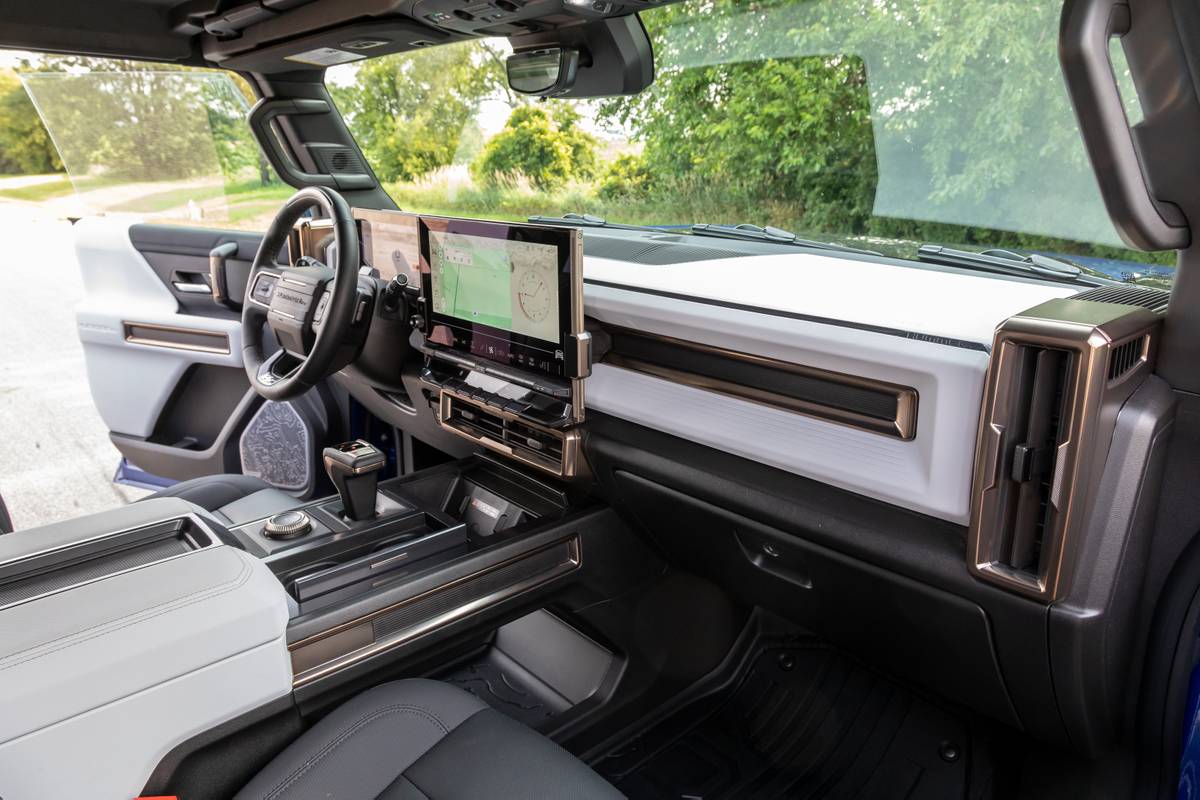
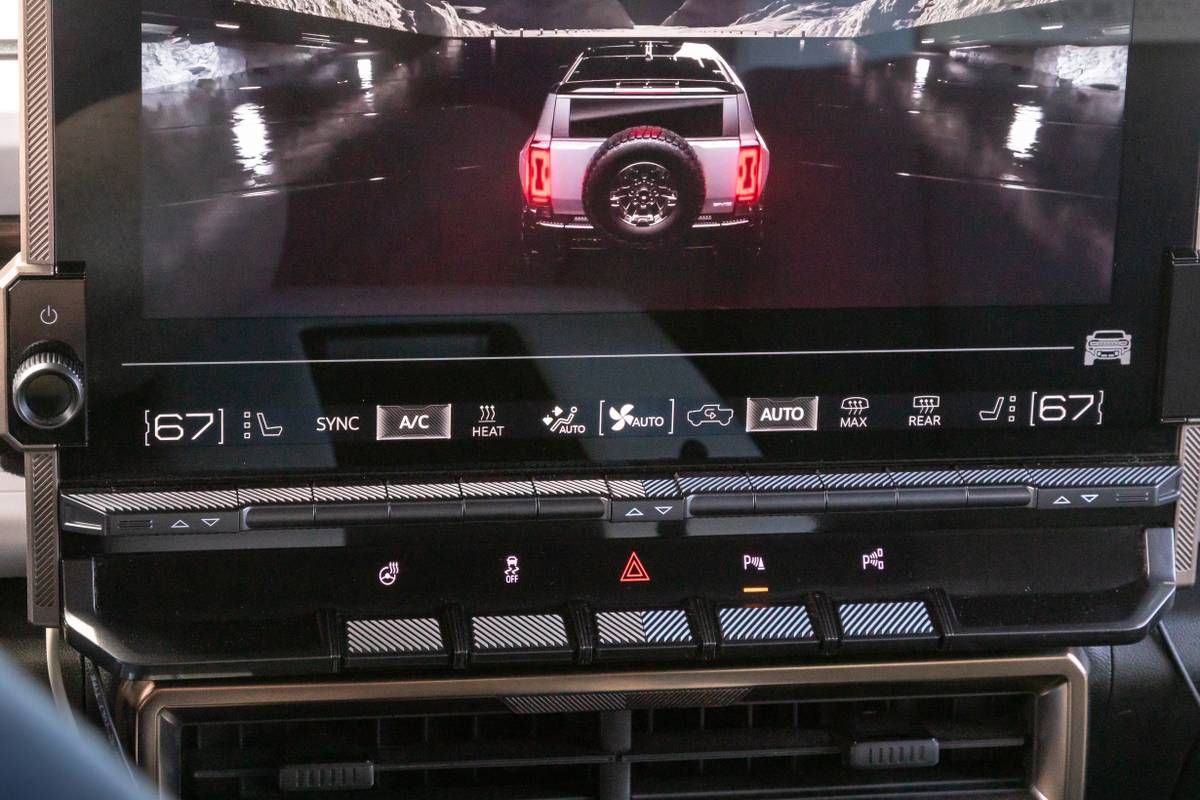
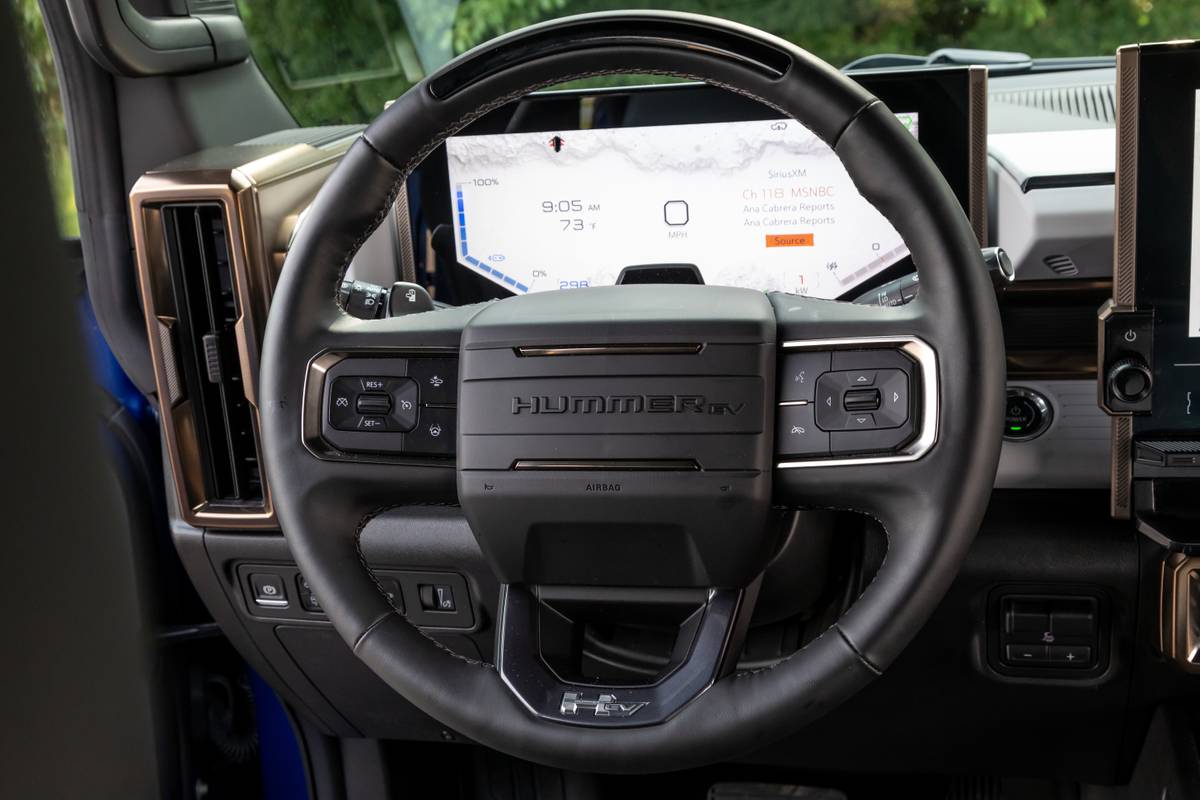
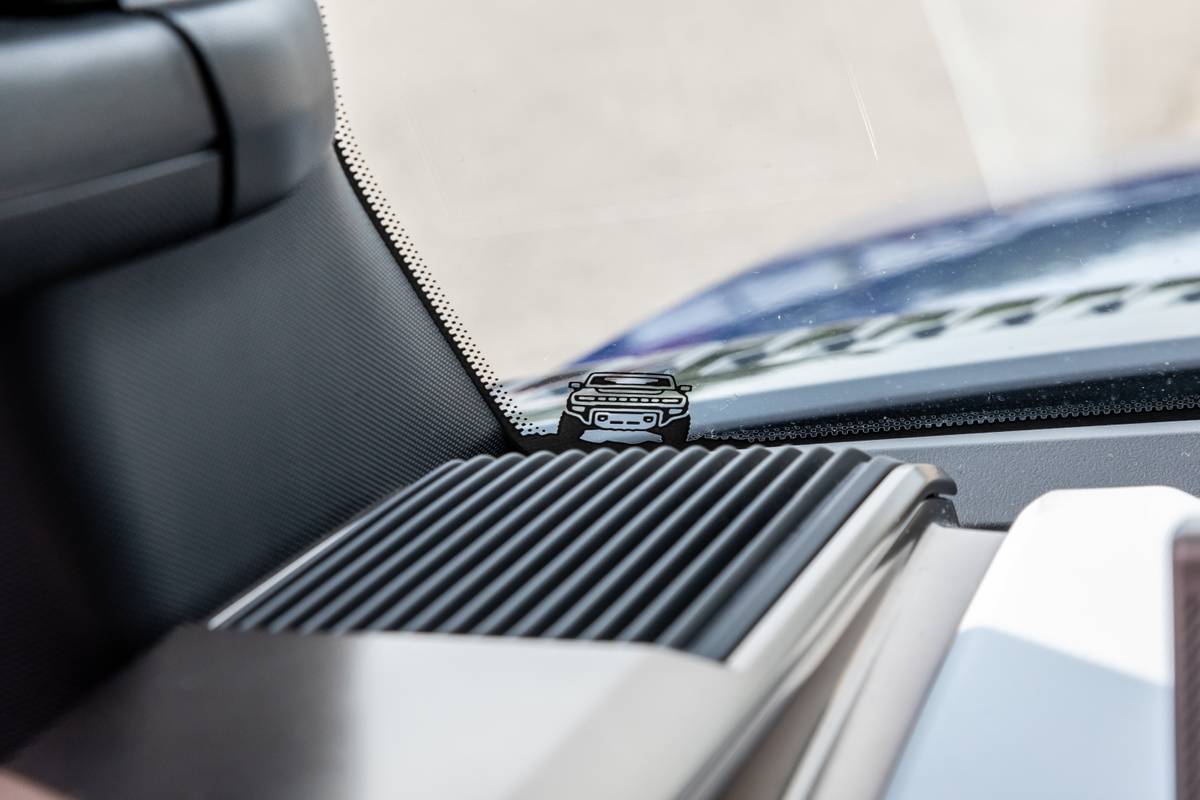
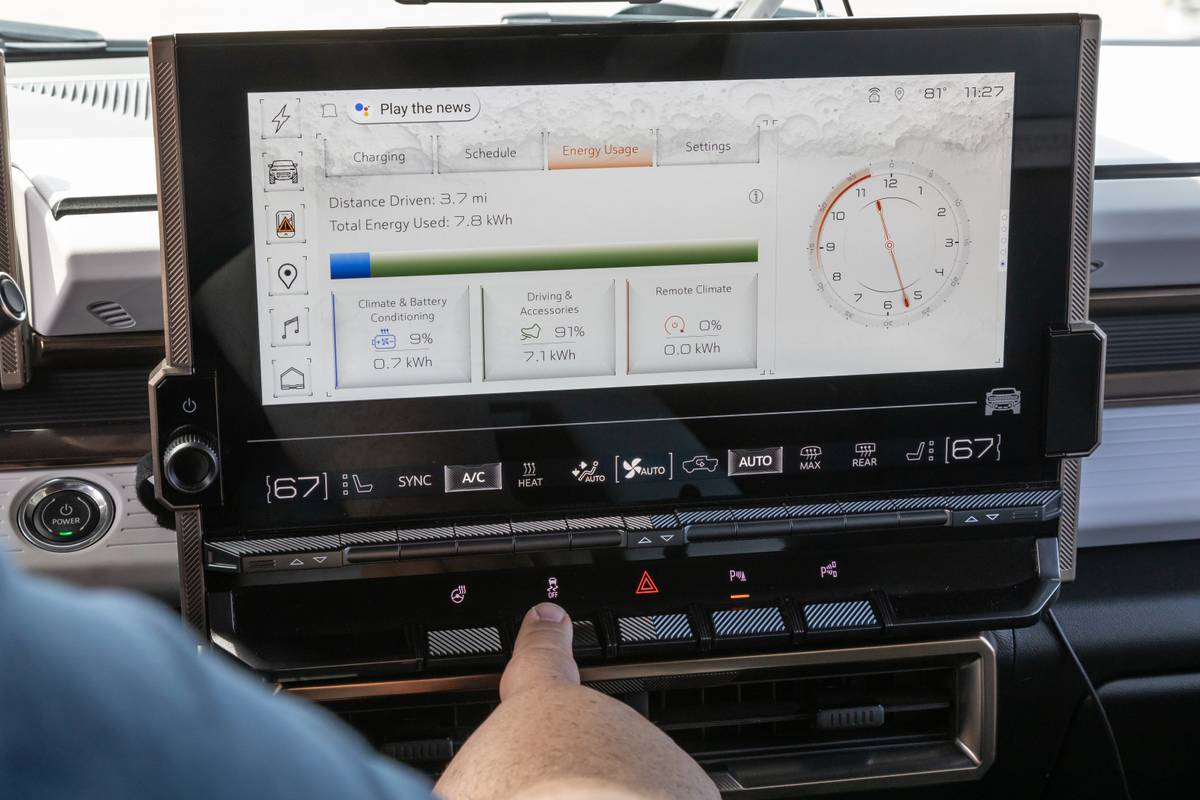
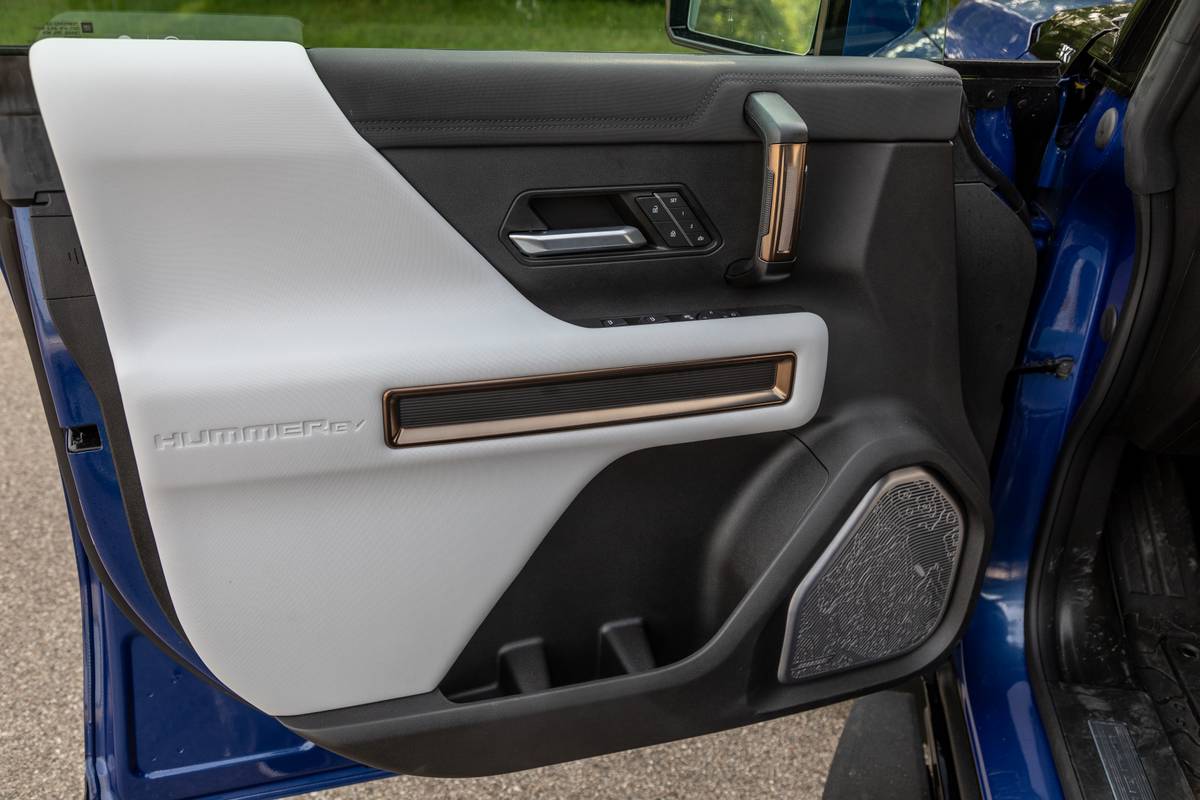










What it doesn’t have for proper sporty driving is grippy tires. In our acceleration tests and on the handling course, the chunky 22-inch all-terrain SUV tires didn’t quite have the grip necessary to deliver to the pavement all of the power the Hummer can make. If you’re not driving it like a madman, though, the tires are more than adequate for everyday motoring. They’re decently quiet, grippy enough, and likely to be effective in all four seasons and on varying types of surfaces.
Driving the Hummer EV SUV is a truly surprising experience. It’s remarkably civilized, easy to handle, comfortable and a ton of fun. What it is not, however, is efficient. The idea behind the Hummer EV is for it to be a flagship vehicle for all of GM’s advanced EV technology — from the batteries and electronics to the performance powertrain and suspension gimmickry — wrapped in the most outrageous visual package GM could come up with. But as a result of packing all of the tech into it to make it insanely capable, GM also had to amp up the battery size, further adding to its insane heft. And the heavier the battery, the more battery you need to deliver proper performance. It’s an interesting catch-22.
Now that GM has established it can make an incredibly capable, remarkably performing, off-road electric supertruck, we’re hoping its next-generation efforts will focus on lightweighting and making things considerably more efficient. As it stands now, in normal operation, the Hummer EV SUV we tested traveled about 1.1 miles per kWh, which is less than half of what most EVs tend to achieve. It charges relatively quickly when the environmental conditions, battery’s state of charge and preconditioning align, but it still takes a good amount of time to fill up at a 350-kilowatt DC fast charger because the battery is just so big. Going from a 20%-80% state of charge can be done in about 30 minutes on a public fast charger, but that’s almost twice as long as some other vehicles with smaller batteries. God help you if you plan on charging a Hummer EV SUV on a 120-volt household outlet, as you’ll be waiting for days just to get to 80%.
Interior Not Quite Up to Snuff
Stepping up into the cabin of the Hummer EV SUV, it’s equal parts astonishment and disappointment. It’s plenty comfy, with big throne-like seats up front and decent room for three across in the back. The floor is rather high, however, given that the battery is under your feet, so backseat passengers will have a more knees-up seating position than they might expect.
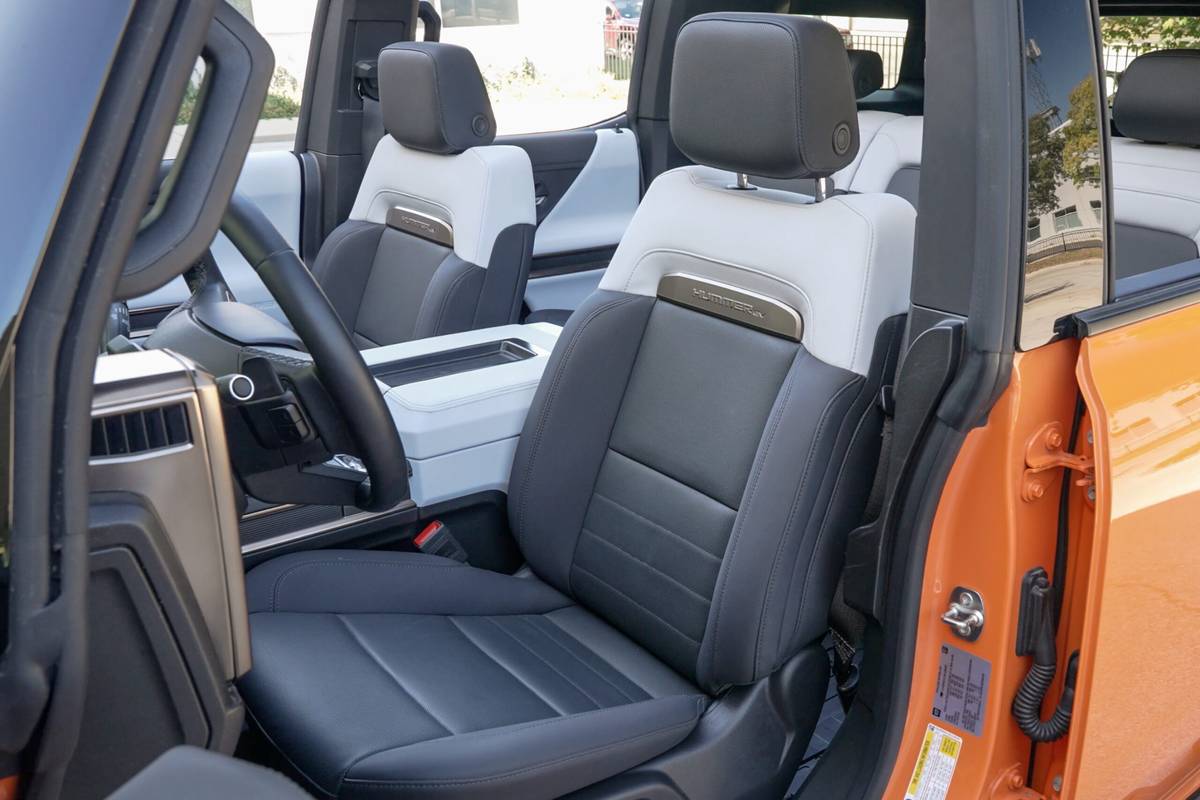



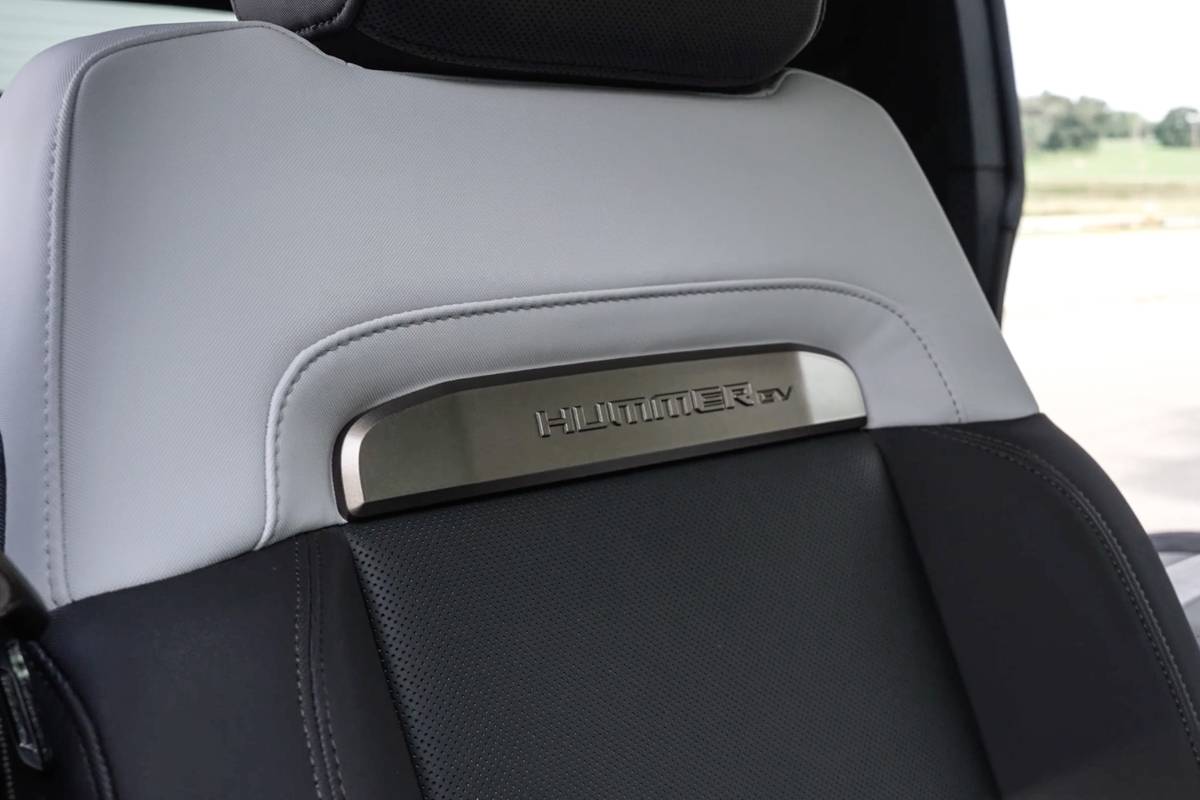











Where there’s not a lot of room is in the cargo area. The liftover height to get stuff into the cargo space is incredibly high, and the space itself isn’t all that deep (again, partly the fault of the huge battery pack). The door to access the cargo area is also unique: It’s a powered swing-gate that opens to the side, not a liftgate that swings up. Why? Well, mounted to it is a spare 22-inch wheel and tire that are incredibly heavy. Even if it didn’t have that spare tire on it, a liftgate in a fully open position on this SUV would be nearly unreachable by a large portion of the driving public. Thus, a powered swing gate opens and closes at the touch of a button.
The Hummer’s interior design is the astonishing part. It looks fantastic, with a “lunar rover” theme that includes some crazy bronze trim, big screens with ultra-high-definition graphics, and a Google Built-In multimedia system. There are toggle switches everywhere, making the cabin feel as space-age as the powertrain. Once you start touching things, though, you realize everything is cheap, thin plastic. Given how huge and expensive the battery is, costs had to be cut somewhere, and it seems GMC decided on the interior materials. This SUV’s designers have done an amazing job making it look totally unique and amazing, but when you tap on the consoles and touch a surface, all of it sounds hollow and thin — certainly not of a quality befitting the Hummer EV SUV’s massive price tag. Even the overhead panels of the removable roof feel like cheap tinted polycarbonate, and while it’s neat that you can take off the four roof panels and store them in the decent-sized frunk, they rattle when they’re in place and do little to keep out wind and road noise. Again, here’s hoping the next-generation version sees some improvements in this area.
More From Cars.com:
- 2024 GMC Hummer EV SUV Video: An Unexpected Favorite
- What’s Bidirectional Charging and Which EVs Offer It?
- Electric Cars With the Longest Range
- What to Know Before Purchasing an Electric Vehicle: A Buying Guide
- Shop for a New GMC Hummer EV SUV
Priced Per Pound?
Lithium-ion batteries are still expensive. There’s no way around that fact, and it’s reflected in the Hummer EV SUV’s eye-popping price tag. The dual-motor 2X version will set you back $98,845 for a 2024 or 2025 vehicle (our test vehicle was a ‘24 model; all prices include $2,295 destination fee). A 3X version like our test vehicle starts at $106,945, but it includes that third motor and more power. Is it worth that much? From a capability standpoint, sure; it legitimately is an electric supertruck in terms of its performance. From a luxury SUV standpoint, no; its interior is not up to that level.
Competitors are doing some things better and some things worse. A Rivian R1S is dimensionally smaller but more comfortable for occupants, and it offers a third row of seats. Its starting price is also tens of thousands of dollars less than the Hummer EV SUV’s. While the R1S is an excellent SUV to drive, though, it can’t do what a Hummer EV SUV can, and it doesn’t provide the same level of outrageous entertainment, either. The Rivian is a better luxury SUV, but it’s not as much of an attention-getting showpiece, which is what I suspect most Hummer EV owners like about their truck. The Hummer EV is not nearly as comfortable as a Mercedes-Benz EQS SUV, but it’s quicker for a lot less money — and decidedly more distinctive.
So whether or not a Hummer EV SUV fits into your life (and your garage) is largely up to your preferences. We can attest that it is a ridiculous amount of fun, impressive in its operation and technology, and like nothing else on the road today (at least until the even more expensive, mechanically similar Cadillac Escalade IQ arrives). The GMC Hummer EV SUV is a technological marvel, an electric concept car that you can drive every day — and you’ll likely love it.
Cars.com’s Editorial department is your source for automotive news and reviews. In line with Cars.com’s long-standing ethics policy, editors and reviewers don’t accept gifts or free trips from automakers. The Editorial department is independent of Cars.com’s advertising, sales and sponsored content departments.

Detroit Bureau Chief Aaron Bragman has had over 25 years of experience in the auto industry as a journalist, analyst, purchasing agent and program manager. Bragman grew up around his father’s classic Triumph sports cars (which were all sold and gone when he turned 16, much to his frustration) and comes from a Detroit family where cars put food on tables as much as smiles on faces. Today, he’s a member of the Automotive Press Association and the Midwest Automotive Media Association. His pronouns are he/him, but his adjectives are fat/sassy.
Latest news

